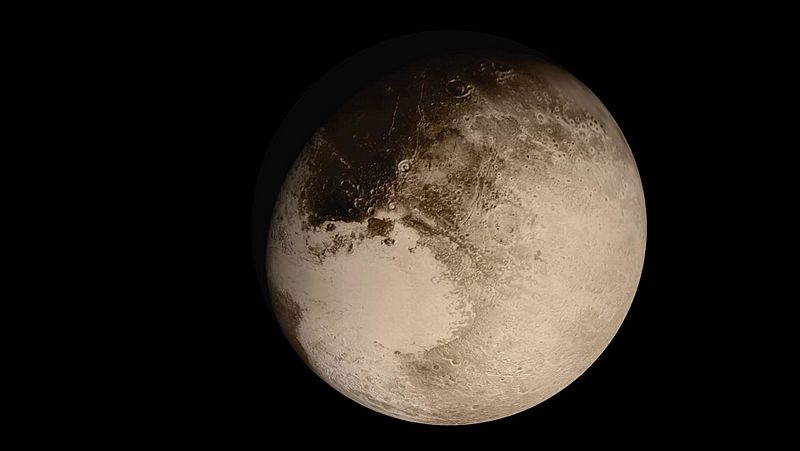Archivo: PIA19873-Pluto-NewHorizons-FlyingPastImage-20150714

Descripción: PIA19873: Flying Past Pluto (Animation) IMAGE: http://photojournal.jpl.nasa.gov/catalog/PIA19873 https://blogs.nasa.gov/pluto/2015/08/28/to-pluto-and-beyond-animating-new-horizons-flight-through-the-pluto-system/ ANIMATION: http://photojournal.jpl.nasa.gov/archive/PIA19873_FLYTHROUGH_ANIMATION_V5.mp4 https://www.youtube.com/watch?v=ds_OlZnV9qk This dramatic view of the Pluto system is as NASA's New Horizons spacecraft saw it in July 2015. The animation, made with real images taken by New Horizons, begins with Pluto flying in for its close-up on July 14, 2015; we then pass behind Pluto and see the atmosphere glow in sunlight before the sun passes behind Pluto's largest moon, Charon. The movie ends with New Horizons' departure, looking back on each body as thin crescents. The Johns Hopkins University Applied Physics Laboratory in Laurel, Maryland, designed, built, and operates the New Horizons spacecraft, and manages the mission for NASA's Science Mission Directorate. The Southwest Research Institute, based in San Antonio, leads the science team, payload operations and encounter science planning. New Horizons is part of the New Frontiers Program managed by NASA's Marshall Space Flight Center in Huntsville, Alabama.
Título: PIA19873-Pluto-NewHorizons-FlyingPastImage-20150714
Créditos: http://photojournal.jpl.nasa.gov/jpeg/PIA19873.jpg
Autor(a): NASA/Johns Hopkins University Applied Physics Laboratory/Southwest Research Institute
Términos del Uso: Public domain
Licencia: Public domain
¿Se exige la atribución?: No
Usos del archivo
La siguiente página enlaza a este archivo:

